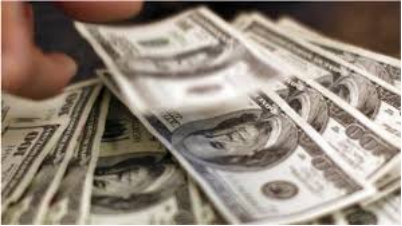As the strength of the U.S. dollar and the rise in U.S. Treasury yields suppressed the attractiveness of non-yielding asset gold, gold prices fell sharply and closed at $1,837.08 an ounce. In contrast to this, the 10-year U.S. Treasury yield once exceeded 3.2 %, the U.S. dollar index hit a high of 104.20 in the day.
The Fed faces a huge test
Recently, the U.S. dollar index hit a 21-and-a-half-year high of 104.19 overnight, but it still failed to stand above the 104 mark at the end of the session. In response to the expectation of a 75-basis-point rate hike at the Fed's next meeting, Atlanta Fed President Bostic slammed it.
Bostic said in an interview that some of the supply pressures that hope to drive inflation higher are showing signs of peaking, "If I were to predict what's going to happen to the economy in the next three to four months, I'd say (a 75 basis point hike) is low probability event."
The views outlined by Bostic are in line with those outlined by Fed Chair Jerome Powell at a news conference last week. The Federal Reserve last week raised its benchmark overnight rate by 0.5 percentage point, the largest rate hike in 22 years. But Powell said at the time that he was not considering a larger rate hike.
In an effort to rein in the most widespread inflation in decades, the Federal Reserve last week announced its largest single rate hike since 2000, while outlining a plan to unwind trillions of dollars in asset purchases. These asset-purchase programs have kept global markets flush with cash since the 2020 economic collapse.
Yet this all comes at one of the most volatile times for the global economy in recent years. The Russian-Ukrainian war and the series of sanctions that followed have upended business. Supply chains disrupted by the pandemic have become more strained, and companies have been hit by soaring prices for everything from labor to commodities. The concern now is whether central banks can unwind their previous massive easing without disrupting capital flows and tipping the economy into recession.
While there are no signs of widespread stress, some indicators of cross-asset health are approaching danger territory. All of this points to a bumpy ride ahead for investors as the Fed withdraws its unprecedented liquidity measures.
Recession worries resurface
Historically, Fed rate hikes have not signaled a recession, because rate hikes themselves are a sign of overheating. But if there is a long-term interest rate inversion during the rate hike, it basically means that a recession is inevitable.
In normal times, when the business cycle is in good shape, yields on long-term 10-year bonds will be higher than on short-term bonds, as investors need more compensation for the risk that future inflation will erode returns. If the opposite happens, where short-term yields are higher than long-term yields, it's called an inversion, indicating that the central bank will eventually have to cut rates to save growth.
The most recent double inversion predates the pandemic, but the recent sharp swing in the yield curve has investors on edge. In late March and early April, 2-year and 10-year U.S. Treasury yields briefly inverted, reflecting market anxiety about aggressive Fed tightening that threatens to trigger a recession by raising the cost of money, thereby restraining consumers expenditures and business activities.
As the end of the era of easy money hits global markets, concerns about the yield curve are everywhere. The tech-heavy Nasdaq has had its worst start in decades this year, with a surge in cross-asset volatility across the globe.
The next Paul Walker?
The last Fed chairman to suffer such severe inflation was Paul Volcker. Volcker raised interest rates to 20% at the expense of a recession during a period of 10% inflation in the United States, which completely suppressed inflation.
The core of Volcker's decision-making is to reverse market expectations at all costs, expressing the strong determination of American policy-makers to control inflation. He showed the courage of a "strong man to break his wrist". This way of managing inflation was strongly opposed by unemployed workers at the time, but it proved to be very effective in hindsight. Volcker's insistence was right.
Volcker was undoubtedly the hero who crushed the inflation of the 1970s, but it is highly doubtful that Powell, the general who was involved in this last war, could be another hero who finally killed the inflationary demon of today, professionally, Powell has a dual Ph.D. in politics and law, and no background in economics. And Powell's tenure from Trump to Biden shows that he can have both sides. Therefore, although Powell currently has a relatively hawkish attitude towards inflation, and needs to raise interest rates vigorously and quickly shrink the balance sheet, once the U.S. economy shows signs of recession, the Fed will turn around at the fastest speed and restart the quantitative easing policy Stimulate the economy.
Under this pessimistic expectation, major markets have sold off, and gold is no exception. The U.S. CPI data to be released this week will be the focus of attention. If inflation continues to accelerate faster than expected, the market may put pressure on the Fed to raise interest rates sharply, while the subsidence of price pressure indicates that the Fed maintains a normal pace of interest rate hikes.
 2022-05-11
2022-05-11
 1029
1029





 简体中文
简体中文
 ภาษาไทย
ภาษาไทย
 繁體中文
繁體中文
 Indonesia
Indonesia











